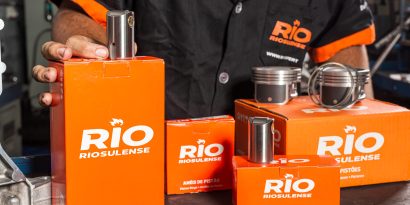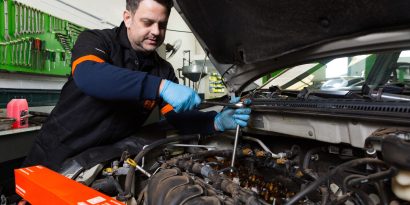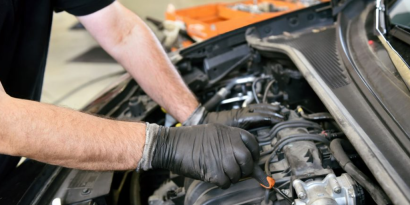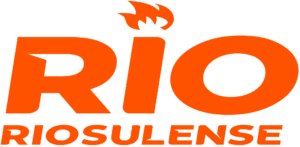When we introduced the RIO Cylinder liners in the blog, you saw how these components are crucial to ensure the good functioning of the pieces that are part of the entire cylinder. After all, they are the great responsibles to allow the precision of the piston and rings axial movement. So, how about you know a little bit more of Wet Cylinder Liners?
In the Wet Cylinder Liner, the cooling liquid works directly with the metal. This means that the cylinder will come right out of the package to your engine! It is an application that possesses seal (Liner and block), and its honing process has the characteristic of controlling the consume and the oil retention in order to lubricate the cylinder walls and to dissipate heat between the ring and the cylinder – thanks to the cooling liquid. All of this process ensures that the application of the rings is made in a smooth way, avoiding the premature attrition and excessive lubricating oil consumption.
Oh, and without saying that the wet cylinder liner also contributes to give more speed to the process of reposition and maintenance, since the pieces are delivered ready for installation!
Know the wet cylinder liner quality process!
If you already follow our blog, you know that we, here in RIO, the strict quality process is already part of our routine. So, in order for you to receive a wet cylinder liner with quality and ready for installation, we work with four different processes in our production line.
First, we have the centrifugation process. Here, the piece is fused and prepared for the following steps. It is important to remember that every liner is made with an individual bushing of molten metal – which is different from dry liners, when each bush is cut in three or four pieces.
When the wet liner comes out from the centrifugation, a small piece of it is removed for structural analysis: it is the laboratorial process! In this step, our laboratory teams verify if the chemical composure is following the specified parameters. It is important to say that this control happens also with the structure of the piece, hardness and other characteristics.
This piece that is removed is always identified, with its specifications, the code of the wet liner and fabrication order, contributing for the traceability in the productive process and helping to ensure the final quality of the product.
When the laboratory attests that all of the parameters of the metal are following the quality standards from RIO, it’s time for the third step: the machining. Here, the wet cylinder liner goes through several types of machining processes. Is when the internal and external profiles are created.
Lastly, in metrology, all of the pieces dimensions are carefully analyzed, considering the internal diameters, external and the piece height. The whole process is made with the assistance of multiple measurement instruments, as per example the rugosimeter, equipment that scans all of the liner surfaces.
This is what ensures that the softening of the piece is successfully made and also ensures a better life cycle for your engine. After all, the new generation of engines will demand more and more of the cylinder liners, which would be more exposed to extreme conditions, attrition and high temperatures.
That is why RIO is always improving the development of new materials: stronger, functional and resistant! And talking about resistance, Bruna Ern has prepared a video explaining every step of the casting and machining process of our wet cylinder liners, check it out:
We also remind that, here in RIO, we have one of the most complete lines of wet cylinder liner in the Market, with material alternatives for different special applications, without mentioning, of course, that we work with the manufacturing of brute bush, which can be adapted by the engine rebuilding if you have more rare pieces.
And added to the excess in the external diameters of the liners, RIO brings to the market several pieces with more metal in all dimensions, in order to supply all the eventual conditions when installing the engine. Visit our portfolio, know the best solutions and be surprised with a full reposition catalogue!
KNOW THE ONLINE CATALOGUE OF RIOSULENSE PRODUCTS





